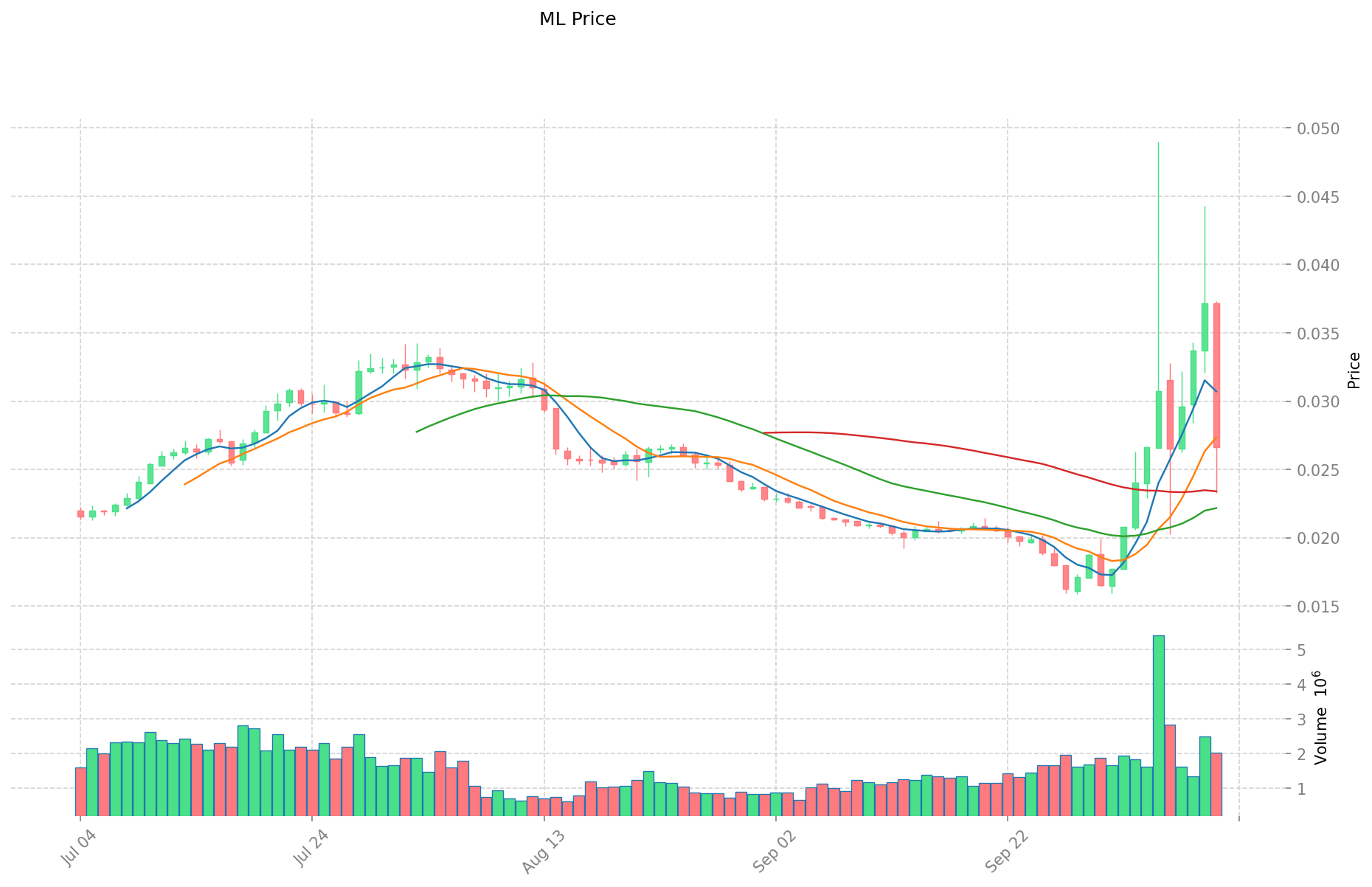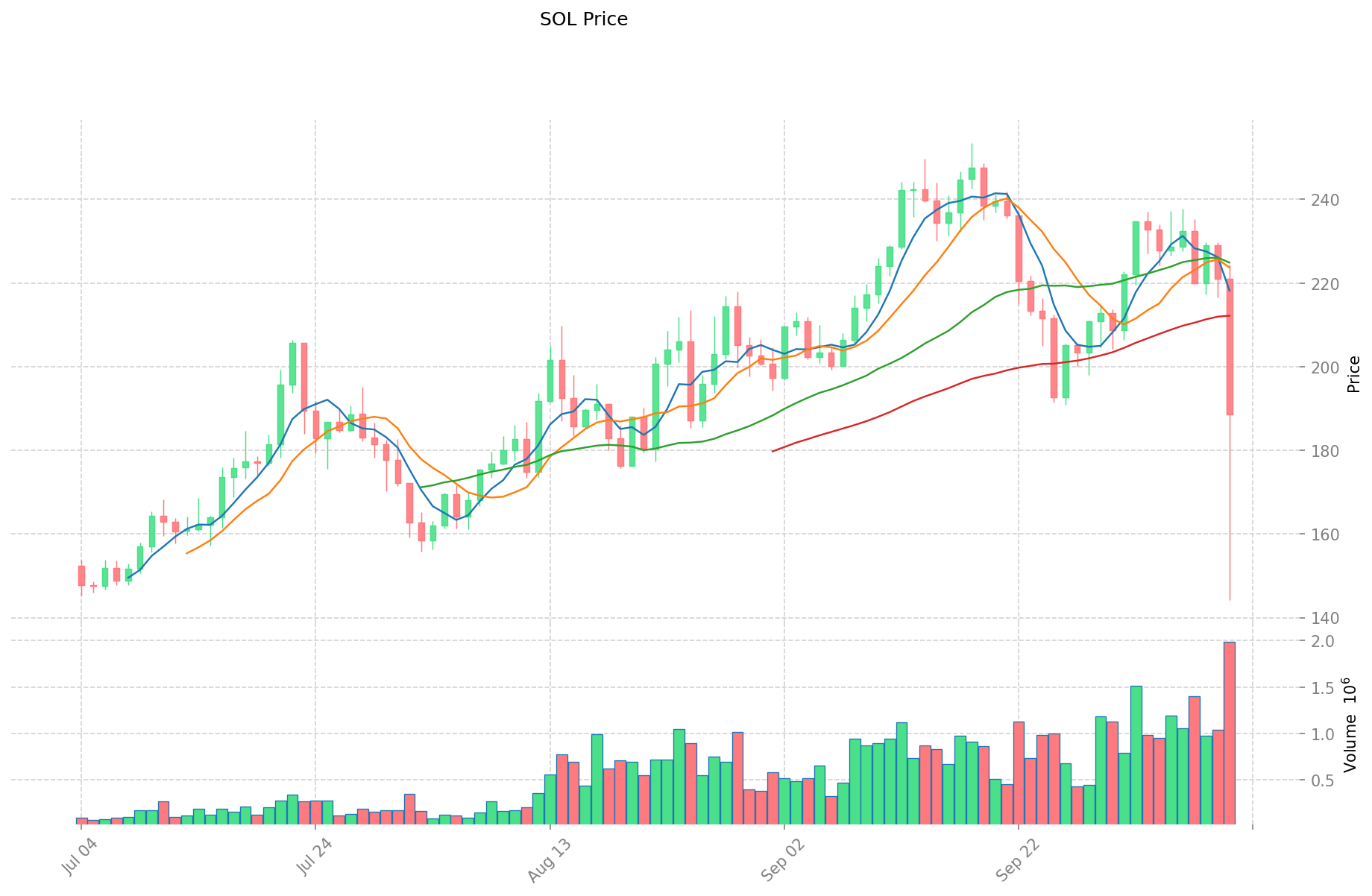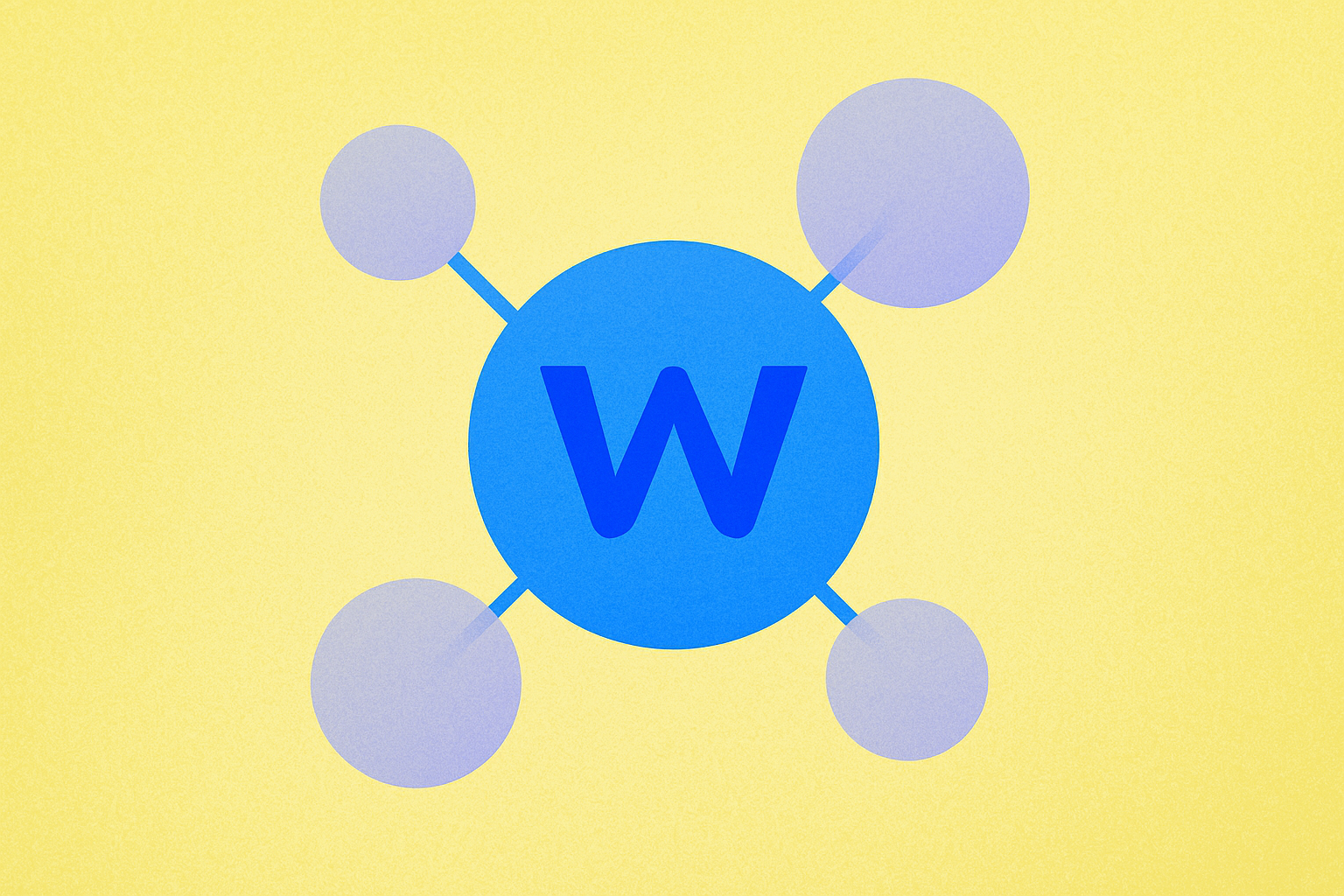ML vs SOL: Veri Analizinde Makine Öğrenimi ile İstatistiksel Öğrenmenin Karşılaştırılması

Giriş: ML ve SOL Yatırımı Karşılaştırması
Kripto para piyasasında Mintlayer ile Solana karşılaştırması, yatırımcıların sürekli gündeminde olan bir konudur. İki varlık; piyasa değeri sıralaması, uygulama alanları ve fiyat performansı gibi temel noktalarda belirgin şekilde ayrışırken, kripto para ekosisteminde farklı varlık konumlandırmalarını da temsil eder.
Mintlayer (ML): Atomik takaslar yoluyla yerel Bitcoin’i kullanarak merkeziyetsiz finans ekosistemi inşa edebilmesi sayesinde lansmanından bu yana piyasanın dikkatini çekmiştir.
Solana (SOL): 2017 sonundan itibaren, ölçeklenebilirliği ön plana çıkaran yüksek performanslı blokzincir protokolü olarak kabul görmüş; küresel işlem hacmi ve piyasa değeri bakımından başı çeken kripto paralardan biri olmuştur.
Bu makale, Mintlayer ve Solana’nın yatırım değerini; geçmiş fiyat trendleri, arz mekanizmaları, kurumsal benimsenme, teknolojik ekosistemler ve gelecek öngörüleri açısından kapsamlı biçimde analiz edecek ve yatırımcıların en çok merak ettiği soruya odaklanacaktır:
"Şu anda hangisi daha avantajlı bir alım?"
I. Fiyat Geçmişi ve Güncel Piyasa Durumu Karşılaştırması
ML (Mintlayer) ve SOL (Solana) Geçmiş Fiyat Hareketleri
- 2024: SOL, DeFi ve NFT sektörlerinde artan kullanım sayesinde güçlü bir büyüme gösterdi; fiyatı, tüm zamanların en yüksek seviyesi olan 293,31 $’a ulaştı.
- 2025: ML piyasaya sürüldü ve piyasadaki potansiyelini değerlendiren yatırımcılar nedeniyle ilk etapta fiyat dalgalanmaları yaşandı.
- Karşılaştırma: Son piyasa döngüsünde, SOL dalgalanmalara rağmen fiyatını 180 $’ın üzerinde tutarak dirençli kaldı; ML ise yeni bir ürün olarak daha yüksek volatiliteye sahipti.
Güncel Piyasa Durumu (11 Ekim 2025)
- ML güncel fiyatı: 0,02683 $
- SOL güncel fiyatı: 186,59 $
- 24 saatlik işlem hacmi: ML 63.185,39 $ / SOL 414.688.713,05 $
- Piyasa Duyarlılık Endeksi (Korku & Açgözlülük Endeksi): 64 (Açgözlülük)
Anlık fiyat görüntüleme:
- ML güncel fiyatı Piyasa Fiyatı
- SOL güncel fiyatı Piyasa Fiyatı


II. ML ve SOL Yatırım Değerini Belirleyen Temel Faktörler
Arz Mekanizması Karşılaştırması (Tokenomik)
- ML: Değeri, veri analiz kabiliyetleri ve işlem süreçlerinde otomasyondan kaynaklanır
- SOL: Hızlı işlem ve yüksek likidite sunar; "önce sıfıra, ardından yeni zirvelere" fiyat hareketi modeli izler
- 📌 Tarihsel eğilim: SOL projeleri, çoklu toparlanma dalgalarına yol açabilecek yüksek volatiliteye sahiptir
Kurumsal Benimsenme ve Piyasa Uygulamaları
- Kurumsal portföyler: Mevcut veriler yetersiz
- Kurumsal kullanım: ML, veri analizi ve otomatik işlem sistemleriyle yatırım değerini yükseltir
- Düzenleyici yaklaşım: Mevcut veriler yetersiz
Teknoloji Gelişimi ve Ekosistem Oluşumu
- ML Teknolojik Güncellemeler: Yatırım çekirdeği; veri analizi, piyasa verisi işleme ve otomatik işlem algoritmalarında bulunur
- SOL Teknolojik Gelişim: Yüksek işlem kapasitesine odaklanır, fiyat hareketleri saniyede yüzlerce işlemi yansıtıyor
- Ekosistem karşılaştırması: ML, işlem süreçlerinin yatırım çekirdeği olurken; SOL hızlı işlem gerçekleştirmeye olanak sağlar
Makroekonomik Faktörler ve Piyasa Döngüleri
- Enflasyon ortamında performans: Mevcut veriler yetersiz
- Para politikası etkileri: ML, piyasa verilerini analiz ederek çeşitli piyasa koşullarında işlem fırsatlarını tespit etmeye yardımcı olur
- Sınır ötesi işlem talebi: SOL’un yüksek işlem hızı, hızlı fiyat hareketleri ve işlem fırsatları sunar
III. 2025-2030 Fiyat Tahmini: ML ve SOL
Kısa Vadeli Tahmin (2025)
- ML: Temkinli 0,0225 $ - 0,0268 $ | İyimser 0,0268 $ - 0,0290 $
- SOL: Temkinli 152,52 $ - 186,00 $ | İyimser 186,00 $ - 258,54 $
Orta Vadeli Tahmin (2027)
- ML, büyüme fazına geçebilir; tahmini fiyat aralığı 0,0217 $ - 0,0337 $
- SOL, boğa piyasasına girebilir; tahmini fiyat aralığı 177,50 $ - 398,04 $
- Temel etkenler: Kurumsal girişler, ETF’ler, ekosistem gelişimi
Uzun Vadeli Tahmin (2030)
- ML: Temel senaryo 0,0385 $ - 0,0405 $ | İyimser senaryo 0,0405 $ - 0,0534 $
- SOL: Temel senaryo 269,09 $ - 498,31 $ | İyimser senaryo 498,31 $ - 637,83 $
Feragatname
ML:
| Yıl | Tahmini En Yüksek Fiyat | Tahmini Ortalama Fiyat | Tahmini En Düşük Fiyat | Değişim Oranı |
|---|---|---|---|---|
| 2025 | 0,0289764 | 0,02683 | 0,0225372 | 0 |
| 2026 | 0,036832224 | 0,0279032 | 0,02371772 | 4 |
| 2027 | 0,03366242048 | 0,032367712 | 0,02168636704 | 21 |
| 2028 | 0,0349959702144 | 0,03301506624 | 0,0277326556416 | 23 |
| 2029 | 0,046927615153536 | 0,0340055182272 | 0,02210358684768 | 27 |
| 2030 | 0,053415868031285 | 0,040466566690368 | 0,038443238355849 | 51 |
SOL:
| Yıl | Tahmini En Yüksek Fiyat | Tahmini Ortalama Fiyat | Tahmini En Düşük Fiyat | Değişim Oranı |
|---|---|---|---|---|
| 2025 | 258,54 | 186 | 152,52 | -1 |
| 2026 | 315,6234 | 222,27 | 128,9166 | 17 |
| 2027 | 398,041116 | 268,9467 | 177,504822 | 42 |
| 2028 | 493,57098384 | 333,493908 | 186,75658848 | 76 |
| 2029 | 583,0807487472 | 413,53244592 | 260,5254409296 | 119 |
| 2030 | 637,832444587008 | 498,3065973336 | 269,085562560144 | 163 |
IV. Yatırım Stratejisi Karşılaştırması: ML ve SOL
Uzun Vadeli ve Kısa Vadeli Yatırım Stratejileri
- ML: Veri analizi ve otomatik işlem kabiliyetine odaklanan yatırımcılar için uygundur
- SOL: DeFi ve NFT alanlarında yüksek işlem hızı ve likidite arayan yatırımcılar için uygundur
Risk Yönetimi ve Varlık Dağılımı
- Temkinli yatırımcılar: ML %20 / SOL %80
- Agresif yatırımcılar: ML %40 / SOL %60
- Koruma araçları: Stablecoin tahsisi, opsiyonlar, çapraz para kombinasyonları
V. Potansiyel Risk Karşılaştırması
Piyasa Riski
- ML: Piyasada yeni olduğu için daha yüksek volatiliteye sahip
- SOL: Kripto para ekosistemindeki genel piyasa duyarlılığı değişimlerinden etkilenebilir
Teknik Risk
- ML: Ölçeklenebilirlik, ağ istikrarı
- SOL: Yüksek trafik dönemlerinde ağ tıkanıklığı, potansiyel güvenlik açıkları
Düzenleyici Risk
- Küresel düzenleyici politikalar, özellikle DeFi ve otomatik işlem sistemleri alanında her iki token üzerinde farklı etkiler yaratabilir
VI. Sonuç: Hangisi Daha Avantajlı Bir Alım?
📌 Yatırım Değeri Özeti:
- ML’nin avantajları: Veri analizi ve otomatik işlem süreçlerinde yüksek potansiyel
- SOL’un avantajları: Kurulu ekosistem, yüksek işlem hızı ve DeFi ile NFT alanında kanıtlanmış başarı
✅ Yatırım Tavsiyesi:
- Yeni yatırımcılar: SOL’a daha fazla pay ayırabilir; piyasa liderliği nedeniyle öne çıkar
- Deneyimli yatırımcılar: ML ve SOL’u dengeli portföye dahil ederek farklı segmentlerden yararlanabilir
- Kurumsal yatırımcılar: ML’nin veri analiz kabiliyetini, SOL’un ekosistem gücünü değerlendirmelidir
⚠️ Risk Uyarısı: Kripto para piyasası son derece dalgalıdır; bu makale yatırım tavsiyesi niteliği taşımaz. None
VII. Sıkça Sorulan Sorular
S1: Mintlayer (ML) ile Solana (SOL) arasındaki ana farklar nelerdir? C: ML, veri analizi ve otomatik işlem kabiliyetine odaklanırken; SOL, yüksek işlem hızı ve DeFi/NFT ekosistemiyle öne çıkar. ML, Bitcoin tabanlı DeFi’de potansiyel vadeden yeni bir oyuncudur; SOL ise geçmişi ve piyasa hacmiyle daha köklüdür.
S2: Son dönemde hangi kripto para daha iyi fiyat performansı gösterdi? C: Verilere göre SOL daha güçlü fiyat performansı ve piyasa istikrarı sunuyor. 11 Ekim 2025 itibarıyla SOL’un fiyatı 186,59 $ iken ML’nin fiyatı 0,02683 $’dı. SOL, piyasa dalgalanmalarına rağmen 180 $ üstünde kalmayı başardı.
S3: ML ve SOL’un arz mekanizmaları nasıl farklılaşıyor? C: ML’nin değeri, veri analizi ve işlem süreçlerinde otomasyondan kaynaklanıyor. SOL ise hızlı işlem ve yüksek likidite ile "önce sıfıra, sonra yeni zirveye" hareketini sergiliyor. SOL projeleri, tarihsel olarak yüksek volatilite ve çoklu toparlanma dalgaları gösteriyor.
S4: ML ve SOL için uzun vadeli fiyat tahminleri nedir? C: 2030 için ML’nin temel senaryosu 0,0385 $ - 0,0405 $; iyimser senaryosu ise 0,0405 $ - 0,0534 $ arası öngörülüyor. SOL’da temel senaryo 269,09 $ - 498,31 $, iyimser senaryo ise 498,31 $ - 637,83 $ aralığında tahmin ediliyor.
S5: Yatırımcılar portföylerini ML ve SOL arasında nasıl dağıtmalı? C: Temkinli yatırımcılar için ML %20, SOL %80 önerilir. Agresif yatırımcılar ML %40, SOL %60 tercih edebilir. Yeni yatırımcılar SOL’a daha yüksek ağırlık verebilir; deneyimli yatırımcılar ise her iki tokeni birlikte değerlendirebilir.
S6: ML ve SOL yatırımlarındaki ana riskler nelerdir? C: ML, piyasada yeni olduğu için daha yüksek volatilite ve ölçeklenebilirlik ile ağ istikrarı sorunlarına açıktır. SOL, piyasa duyarlılığındaki değişimlerden etkilenir ve yoğun trafik sırasında ağ tıkanıklığı yaşayabilir. Her iki token da DeFi ve otomatik işlem sistemleriyle ilgili küresel düzenleyici politikalardan etkilenebilir.

2025 yılında SOL’un rakiplerinden hangi ana özelliklerle ayrıştığı nedir?

Meteora (MET) teknik dokümanı, protokolün temel işleyiş mantığı ve kullanım alanlarıyla ilgili hangi bilgileri sunuyor?

2030 yılına kadar Jupiter (JUP) kripto piyasasında nasıl bir evrim geçirecek?

2025 FRAG Fiyat Tahmini: Kripto para birimi için piyasa trendleri ve olası büyüme faktörlerinin kapsamlı analizi

PLSPAD ve SOL: Merkeziyetsiz Finans alanında Blockchain platformlarının rekabeti

2025 LIQ Fiyat Tahmini: Likidite Protokol Tokenlerinin Geleceğini Belirleyen Yükseliş Trendleri ve Temel Etkenler

2024 Meme Coin Fiyat Tahmini: STARS Yeni listelemelerle hızlı bir yükseliş gösteriyor

Ön Satışta Büyük Başarı: Crypto All-Stars, güçlü tokenomik yapısıyla 4 milyon dolar fon sağladı

Merkezi Kripto Para Borsalarını Anlamak: Kapsamlı Bir Rehber

WOO Network (WOO) nedir? | Merkeziyetsiz Alım Satım Platformu

2025'te Kripto Para Alım Satımına Yeni Başlayanlar İçin Nihai Rehber







